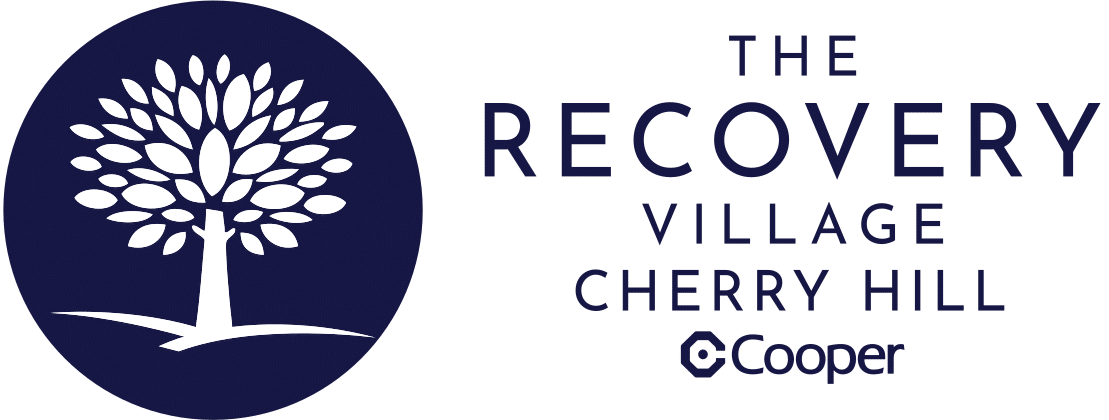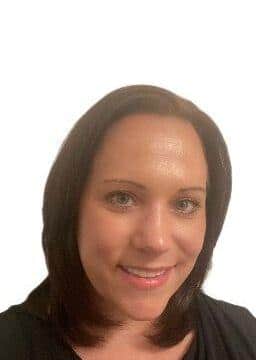10 Most Common Addictions in the U.S.

By The Recovery Village
Medical Reviewer Sara G. Graff, LCSW | Editor Theresa Valenzky
Last Updated: November 2, 2023
Editorial Policy | Research Policy
Millions of Americans struggle with substance misuse and addiction each year. Learn the most common addictions and how to help someone with a drug addiction.
In its many forms, addiction is the single leading cause of preventable deaths in the U.S. today. In 2020, more than one in five adults used illicit drugs, one in four used tobacco or nicotine products and seven in 10 consumed alcohol. While not everybody who uses these drugs will become addicted, over one in seven adults struggle with a substance use disorder each year.
Addiction’s burden on families, individuals and society is overwhelming. Fortunately, people can recover from addiction with the help of targeted treatment from professional addiction treatment services.
What Is Addiction?
Addiction, also known as substance use disorder (SUD), is a condition where people struggle to stop using drugs or alcohol on their own despite harmful consequences. If left untreated, addiction can quickly overwhelm a person’s ability to manage everyday tasks, keep up with their responsibilities and maintain healthy relationships.
To diagnose a substance use disorder, addiction professionals look for 11 key criteria outlined in the American Psychiatric Association’s Diagnostic and Statistical Manual of Mental Disorders (DSM-V-TR):
- Taking drugs or alcohol for longer periods or in greater amounts than intended
- Multiple unsuccessful attempts to reduce or control drug or alcohol use
- Spending excessive time taking, recovering from or seeking out the substance of choice
- A persistent desire to use drugs or alcohol, known as cravings
- Drug or alcohol use interferes with work, school or home obligations
- Continued drug or alcohol use despite social or personal problems
- Dropping important activities in favor of drug or alcohol use
- Using drugs or alcohol in hazardous situations
- Continued drug or alcohol use despite worsening physical or mental health symptoms
- Increasing tolerance, meaning more of the substance of choice needs to be used to achieve the desired effect
- Physical withdrawal symptoms if drug or alcohol use suddenly stops
When someone experiences two or more of these symptoms, they can be diagnosed with a substance use disorder.
Most Common Addictions
To determine the rates of substance use disorders among the population, the Substance Abuse and Mental Health Services Administration (SAMHSA) conducts a yearly nationwide survey to monitor several health factors.
This survey is known as the National Survey on Drug Use and Health (NSDUH), and the government has conducted it since 1971. Over 36,000 interviews were performed nationwide in 2020, producing rates of addictive disorders.
Alcohol
Alcohol use disorder is by far the most common addiction Americans face. For adults over 18, 11% had an alcohol use disorder, and those aged 18–25 had an even higher addiction rate at 15.6%.
While most people don’t develop severe substance use concerns with alcohol, it’s important to note that no level of alcohol use is safe. Alcohol is a known carcinogen, and more than 140,000 people die from excessive alcohol use yearly in the U.S.
Marijuana
The second most abused illicit substance in the U.S. is marijuana. In 2020, 5.2% of adults were categorized as having a cannabis use disorder, which equates to over 13 million people.
While many people consider marijuana to be a relatively harmless substance, evidence shows that this is not the case. Marijuana can negatively affect your brain, lungs, heart and mental health.
Nicotine
Nicotine is the second most common addiction after alcohol. In 2020, 9.3% of the U.S. adult population met the criteria for nicotine dependence.
Although nicotine dependence doesn’t typically bring about the same social, occupational and mental health challenges as illicit substances, it can cause devastating physical symptoms that can affect people’s health for the rest of their lives. The Centers for Disease Control and Prevention places cigarette smoking as the leading cause of preventable death. It is responsible for one in five deaths nationwide.
Cocaine and Crack Cocaine
Cocaine and crack cocaine are powerful stimulant drugs. Among adults, 0.5% of the national population struggles with cocaine use disorder each year.
Prescription Opioids
Prescription opioids include drugs such as Oxycodone, Vicodin, Lortab and codeine. Prescription opioid use is a troubling problem in the U.S. In 2020, nearly 1% of the population had an addiction to prescription opioids, accounting for over 2.2 million adults.
Heroin
While not as prevalent as prescription opioid use, heroin use makes up a significant portion of addiction rates in the U.S. Roughly 0.3% of adults struggled with a heroin use disorder in the past year.
Benzodiazepines
Benzodiazepines include drugs such as Xanax, Klonopin and Valium. After pain relievers, benzodiazepines are the second most abused psychotherapeutic drugs, and 0.4% of the U.S. adult population struggles with a benzodiazepine use disorder.
Stimulants
Central nervous system stimulants comprise a broad category that includes three majorly abused substances. Cocaine is a central nervous system stimulant. The other two substances include methamphetamine and prescription stimulants, such as Adderall, Vyvanse, Concerta and Ritalin.
In the U.S., 1.2% of adults have a stimulant use disorder. People who use methamphetamine and have stimulant use disorder account for roughly half of that statistic at 0.6%. People whose prescription stimulant use meets SUD criteria make up another 0.3%.
Inhalants
Inhalants are less frequently misused than other drugs in the U.S., with 0.1% of adults having inhalant use disorder.
Sedatives (Barbiturates)
Lastly, sedative drugs refer to barbiturates such as phenobarbital, pentobarbital and secobarbital. These drugs were commonly prescribed in previous decades, but their high potential for abuse and extreme health risks led to their replacement with benzodiazepines.
Today, just 0.1% of the population struggles with sedative use disorder.
How To Help Someone With a Drug Addiction
You might be wondering how to help someone with a drug addiction. If the person genuinely wants to stop, the best way to support them is to help them find an addiction treatment facility that can provide the tools and skills they need to create lasting change in their life.
How To Find a Rehab in New Jersey
The next step is to find a quality addiction rehab. The best addiction treatment centers will provide multiple levels of care, evidence-based treatment and long-lasting support. Look for a treatment center that can offer services such as:
- Medical detox
- Inpatient rehabilitation
- Partial hospitalization programs
- Intensive outpatient programs
- Outpatient rehabilitation
- Medication-assisted treatment
- Treatment for co-occurring disorders
- Aftercare support
These services work together to ensure that anyone coming to treatment has the tools to build a long-lasting recovery.
Drug Addiction Treatment at The Recovery Village Cherry Hill
When you’re ready to start treatment, reach out to the team at The Recovery Village Cherry Hill at Cooper to learn more about our extensive treatment options. Our programs were built to help people recover from different substance use disorders and equip them with the skills and knowledge needed to thrive after treatment.
Located in Cherry Hill, New Jersey, just 20 minutes from Philadelphia, our 55,000-square-foot facility covers the full continuum of care, from medical detox to outpatient care and beyond.
Our multidisciplinary team of licensed counselors, addiction experts and compassionate medical professionals is dedicated to helping people overcome addiction and build strong, healthy lives in sobriety. Don’t delay seeking treatment any longer — contact The Recovery Village Cherry Hill at Cooper today.
Sources
Substance Abuse and Mental Health Services Administration. “2020 National Survey of Drug Use and Hea[…]DUH) Releases.” CBHSQ Data. Accessed August 29, 2022.
Centers for Disease Control and Prevention. “Alcohol and Cancer”>.” April 6, 2022. Accessed August 29, 2022.
Centers for Disease Control and Prevention. “Deaths from Excessive Alcohol Use in the[…]United States.” July 6, 2022. Accessed August 29, 2022.
American Psychiatric Association. “Diagnostic and Statistical Manual of Men[…]ers: DSM-5-TR.” 2013. Accessed August 29, 2022.
Griswold, Max G., et al. “Alcohol use and burden for 195 countries[…]e Study 2016.” The Lancet, September 2018. Accessed August 29, 2022.
Centers for Disease Control and Prevention. “Health Effects of Marijuana”>.” April 22, 2022. Accessed August 29, 2022.
Substance Abuse and Mental Health Services Administration. “Key Substance Use and Mental Health Indi[…]se and Health.” 2020. Accessed August 29, 2022.
López-Muñoz, F., Ucha-Udabe, R., & Alamo, C. “The history of barbiturates a century af[…]introduction.” Neuropsychiatric Disease and Treatment, December 2005. Accessed August 30, 2022.
Centers for Disease Control and Prevention. “National Health Report Highlights”>&l[…];s[…]rt Highlights.” Accessed August 29, 2022.
Substance Abuse and Mental Health Services Administration. Section 1 PE Tables – Results from the[…]tailed Tables.” January 11, 2022. Accessed August 29, 2022.
Substance Abuse and Mental Health Services Administration. Section 2 PE Tables – Results from the[…]tailed Tables.” January 11, 2022. Accessed August 29, 2022.
Substance Abuse and Mental Health Services Administration. “Section 5 PE Tables – Results from the[…]tailed Tables.” January 11, 2022. Accessed August 29, 2022.

 Insurance
Insurance About Us
About Us Our Facility
Our Facility Admissions
Admissions Programs
Programs Medical Detox
Medical Detox Inpatient Rehab
Inpatient Rehab Aftercare & Recovery
Aftercare & Recovery
